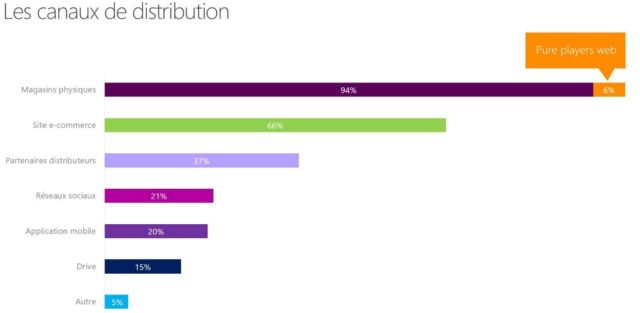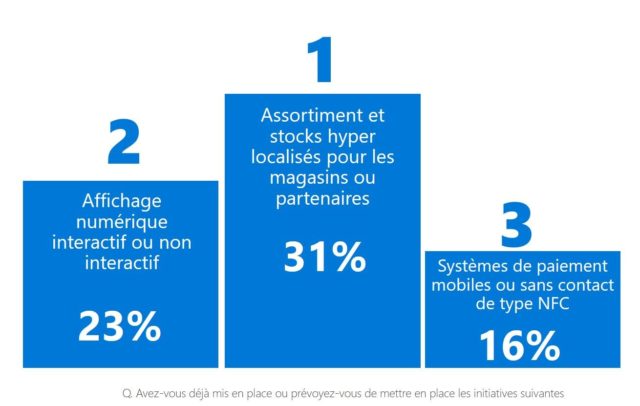A study carried out by IDC for Microsoft analyzes the digital transformation of retail brands and presents the resulting results. In this article, we propose to review the most significant facts regarding the digital transformation of companies.
Distribution channels: omnichannel is evolving
Obviously, physical stores remain an essential sales channel and are used by 94% of retailers. E-commerce sites are now well developed (2 out of 3 brands actually have one), but there is still room for improvement with regard to other digital channels such as social networks and mobile applications.
Thus, omni-channel is not yet a strategy integrated by all distribution players. 55% of the brands questioned have an activity omnichannel. However 45% do not. Of these 45%, 32% do not even plan to develop a sales activity omnichannel.
On the other hand, mobile is much more used as a communication channel (90%) or as a channel for promoting their products and services (63%) rather than a sales channel by companies (23%). Moreover, 65% of those who use mobile as a sales channel make less than 5% of their turnover there.
How to bring physical and mobile stores closer together?
The study carried out by Microsoft indicates that the majority of connections between the physical and digital world are made through the loyalty card (61%). Then, other means are also used such as for example:
- The technologies of tracking at the store,
- touch terminals,
- Sending messages via Facebook,
- Registration for an information service,
- ...
Although this is a good start, these uses must be even finer in order to guarantee synergies between the two universes.
Synergies between traditional store and e-commerce
At present, the rapprochement between traditional stores and the e-commerce site is better and better perceived by brands. However, still 35% of them only work on one channel. The most used synergies are the improvement of services offered in stores (home delivery, click & collect, etc.) (53%) and the use of data to better address physical and digital customers (38%).
The least used synergies are still the personalization of the in-store experience (13%), the provision of information on products via IoT-type technologies (7%) and the development of ephemeral stores in relay of online transactions (6%).
Finally, there is a large potential for improvement for brands, which is based in particular on mobile (such as drive to store, for example).
The digital transformation of points of sale
The digital transformation of points of sale begins with:
- The assortment and hyper-localized stocks for partner stores (31%)
- Interactive or non-interactive digital signage (23%)
- NFC-type mobile or contactless payment systems (16%)
In addition, in points of sale, innovation accelerators are appearing, such as the Internet of Things (12% of brands currently use it). This innovation aims to improve the customer experience and journey, as well as the supply chain. The technologies implemented range from cameras to NFC technologies and even beacons.
Other innovations are also currently used such as 3D printing (especially in the field of household equipment), natural interfaces, generalized robotics (for example the front office and customer interactions, merchandise management and customer services), facial recognition or blockchain. The last 3 innovations still have low adoption rates in the retail sector.
Mobility and digital technology: major commercial challenges
Technological innovations allow employees to be revalued at the point of sale by allowing a more fluid and value-creating relationship with the customer. However, at present, 50% of employees are not yet trained in digital uses.
68% of brands have equipped their employees with either smartphones or tablets. The objective is then that the latter appropriate them and optimize the experience of their customers as well as their sales.
The real challenge therefore lies in the development of new capacities for companies consisting in creating deep synergies between their different channels, whether they are dedicated to sales or communication.


